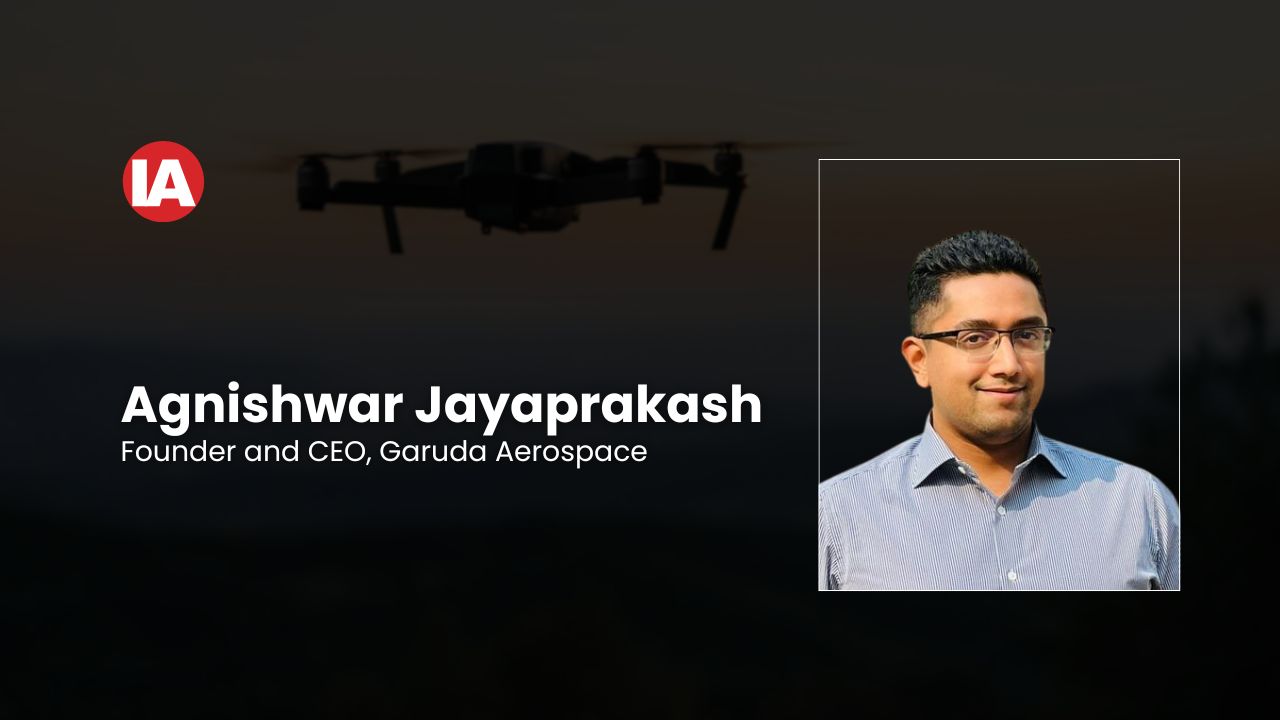
India as a Next Gen Drone Hub
India's drone industry is soaring, driven by innovation, infrastructure, and government support. As the country moves towards becoming a global drone hub, challenges such as airspace regulation, cybersecurity, and manufacturing costs must be addressed. Agnishwar Jayaprakash, Founder and CEO of Garuda Aerospace, highlights the need for strategic investments, policy enhancements, and public-private collaborations to unlock the full potential of drone technology in India.
![[object Object]](https://admin.industrialautomationindia.in/storage/articles/article-5IC78WsPjgADtxXan97xpzDMnwPHWbULcKG5L1pr.png)
While India’s drone industry is on an upward trajectory, certain challenges need to be addressed, says Agnishwar Jayaprakash, Founder and CEO, Garuda Aerospace.
India is rapidly emerging as a global leader in drone technology, driven by advancements in innovation, infrastructure, and government initiatives. As drones continue to revolutionise industries such as agriculture, logistics, disaster management, and defense, India is uniquely positioned to become a next-generation drone hub. The country’s commitment to research and development (R&D), a robust regulatory framework, and increasing public-private partnerships are further strengthening this transformation.
With a thriving ecosystem of startups and tech companies, India is witnessing rapid innovation in drone flight technologies, autonomous systems, and artificial intelligence (AI)-driven applications. Companies are developing cutting-edge solutions such as AI-powered drones for surveillance, precision agriculture, and last-mile delivery. The integration of AI and machine learning is also enabling drones to operate autonomously, enhancing their effectiveness across multiple sectors.
Infrastructure and regulatory developments
Infrastructure development is a critical element in India’s journey to becoming a global drone hub. The establishment of drone corridors, testing facilities, and dedicated drone parks will play a significant role in enabling seamless operations. By integrating drones into national and international airspace systems, regulatory barriers can be minimised, creating a streamlined and efficient drone ecosystem.
Public-private partnerships will further contribute to infrastructure expansion, providing companies with access to high-tech manufacturing facilities, research labs, and safe testing environments. These developments will allow startups to focus on technological advancements without being hindered by operational constraints. Additionally, the implementation of 5G networks and advancements in satellite-based navigation systems will enhance drone communication and real-time data processing, further boosting efficiency.
Government initiatives and industry growth
Government initiatives such as Drone Shakti and Namo Drone Didi have demonstrated the transformative potential of drones in sectors like agriculture, healthcare, and disaster management. These programs have facilitated the deployment of drones for crop monitoring, pesticide spraying, and delivering essential supplies to remote areas.
With a favorable policy environment and continued investment in drone technology, India is set to expand the use of drones in public services, urban planning, and smart city development. Encouraging collaborations between government bodies and private enterprises will further accelerate drone adoption at the grassroots level. Additionally, the relaxation of import duties on drone components and increased funding for indigenous drone manufacturing will help establish a self-reliant drone industry in India.

Sustainable and global expansion
As the world moves toward sustainable solutions, India’s drone industry is focusing on eco-friendly innovations. Energy-efficient drones powered by solar energy or alternative fuels are being developed to minimise environmental impact. Drones are already proving to be a sustainable alternative to traditional transport and delivery methods, reducing carbon footprints and optimising resource utilisation.
By fostering sustainable practices in drone manufacturing and operation, India can lead the way in establishing environmentally responsible drone technology that aligns with global climate goals. The use of biodegradable materials in drone construction and innovations in battery recycling are also gaining traction within the industry, further reinforcing sustainability efforts.
With drone technology gaining traction worldwide, Indian manufacturers and startups have a significant opportunity to expand into global markets. By improving international trade access, strengthening export capabilities, and forming collaborations with global stakeholders, India can position itself as a key exporter of high-quality drone technology. Reduced tariffs on drone components, streamlined export policies, and active participation in global drone regulations will help Indian companies gain a competitive edge.
Challenges and the road ahead
While India’s drone industry is on an upward trajectory, certain challenges need to be addressed. Issues related to airspace congestion, cybersecurity risks, and cost barriers in drone manufacturing must be overcome for widespread adoption. Continued investment in R&D, public awareness campaigns, and training programs for drone operators will be key to ensuring sustainable growth in the sector.
Moreover, addressing concerns regarding drone misuse and enforcing strict compliance with national security regulations will be crucial in maintaining the integrity of drone operations. Collaborations with international aviation bodies and cybersecurity experts can further strengthen India’s regulatory framework, ensuring the safe and ethical deployment of drones.
With a well-defined regulatory framework, robust infrastructure, and strategic global partnerships, India is well on its way to establishing itself as the next-generation drone hub. By capitalising on innovation and sustainability, India can lead the world in cutting-edge drone technology, transforming industries and shaping the future of aerial solutions.